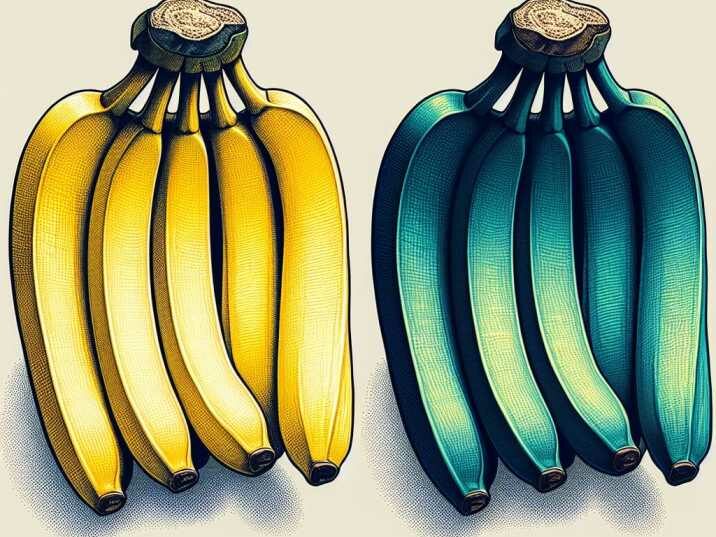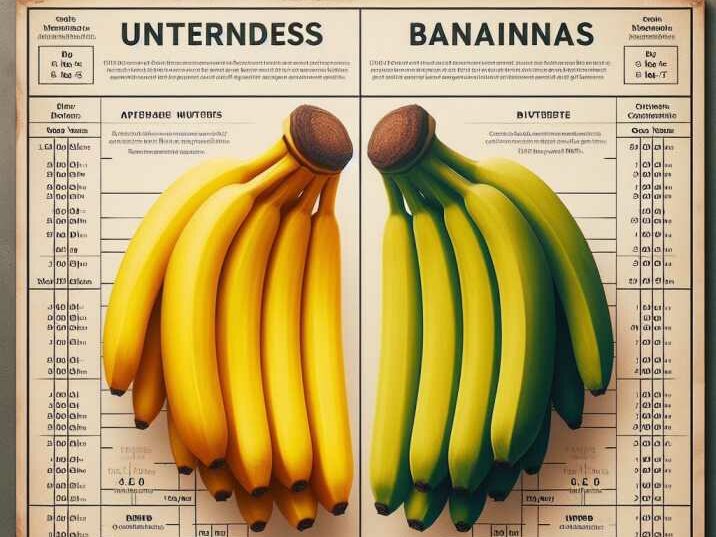Introduction:
Table of Contents
Bananas are one of the most beloved fruits worldwide, renowned for their sweet taste, convenience, and rich nutritional content. Among the various banana cultivars, the Cavendish banana holds a special place, dominating global markets. However, did you know that the nutrient composition of a Cavendish banana undergoes significant changes as it ripens? In this article, we explore the distinct nutrient profiles of ripe and unripe Cavendish bananas, shedding light on their respective health benefits.

Nutrient Differences Between Ripe and Unripe Cavendish Bananas:
Understanding Cavendish Bananas
Cavendish bananas, scientifically known as Musa acuminata ‘Cavendish,’ are the most commonly consumed variety globally. Originating from Southeast Asia, they are now cultivated in tropical regions worldwide.
Nutritional Composition of Ripe Cavendish Bananas
Ripe bananas are recognized for their sweet taste and vibrant yellow peel. They are an excellent source of macronutrients, particularly carbohydrates, with a medium-sized banana containing around 27 grams. Additionally, ripe bananas boast high levels of micronutrients such as potassium, vitamin C, and vitamin B6, which contribute to overall health and wellbeing.
Nutritional Composition of Unripe Cavendish Bananas
Unripe bananas, often referred to as green bananas, are characterized by their firm texture and green peel. Unlike their ripe counterparts, unripe Cavendish bananas contain higher levels of starch and lower levels of sugars. This starch content gradually converts into sugars as the banana ripens, resulting in the sweeter taste associated with ripe bananas. Moreover, unripe bananas are rich in dietary fiber, which aids digestion and promotes gut health.
Comparing Nutrient Profiles
The contrasting nutrient profiles of ripe and unripe Cavendish bananas offer distinct health benefits. While ripe bananas provide quick energy due to their higher sugar content, unripe bananas offer sustained energy release and support digestive health due to their starch and fiber content.
Optimizing Dietary Choices
Incorporating both ripe and unripe Cavendish bananas into your diet can provide a balanced nutritional intake. Ripe bananas are perfect for snacking or adding natural sweetness to dishes, while unripe bananas are ideal for cooking or blending into smoothies for a fiber boost.

Below is a simplified table comparing the nutrient profiles of ripe and unripe Cavendish bananas:
| Nutrient | Ripe Cavendish Banana | Unripe Cavendish Banana |
|---|---|---|
| Carbohydrates (g) | 27 | 22 |
| Sugars (g) | 14 | 5 |
| Fiber (g) | 3 | 6 |
| Starch (g) | 0 | 15 |
| Potassium (mg) | 422 | 362 |
| Vitamin C (mg) | 10 | 8 |
| Vitamin B6 (mg) | 0.5 | 0.4 |
This table provides a quick overview of the main nutritional differences between ripe and unripe Cavendish bananas, highlighting variations in carbohydrate content, sugars, fiber, starch, as well as key vitamins and minerals.
Conclusion:
In conclusion, understanding the nutrient disparities between ripe and unripe Cavendish bananas allows individuals to make informed dietary choices tailored to their health goals. By incorporating both stages into your diet, you can enjoy a wide array of nutritional benefits and delicious flavors. So, whether you prefer your bananas ripe and sweet or firm and starchy, rest assured that both options offer valuable nutrients to support your wellbeing.
FAQs (Frequently Asked Questions)
- Are unripe bananas better for weight loss?
- Yes, unripe bananas are lower in sugars and higher in resistant starch, which can aid in weight management by promoting satiety and regulating blood sugar levels.
- Can ripe bananas help with digestion?
- Yes, ripe bananas contain soluble fiber, which can help alleviate constipation and promote healthy digestion.
- Are unripe bananas good for cooking?
- Absolutely! Unripe bananas hold their shape well when cooked and can be used in savory dishes like curries or as a healthier alternative to potatoes in recipes.
- Which stage of banana is better for athletes?
- Athletes may benefit from consuming both ripe and unripe bananas. Ripe bananas offer quick energy, while unripe bananas provide sustained energy release and support muscle recovery due to their potassium content.
- How do you tell if a Cavendish banana is ripe?
- A ripe Cavendish banana will have a bright yellow peel with no green spots and may have small brown speckles. It should yield slightly to gentle pressure when squeezed.
